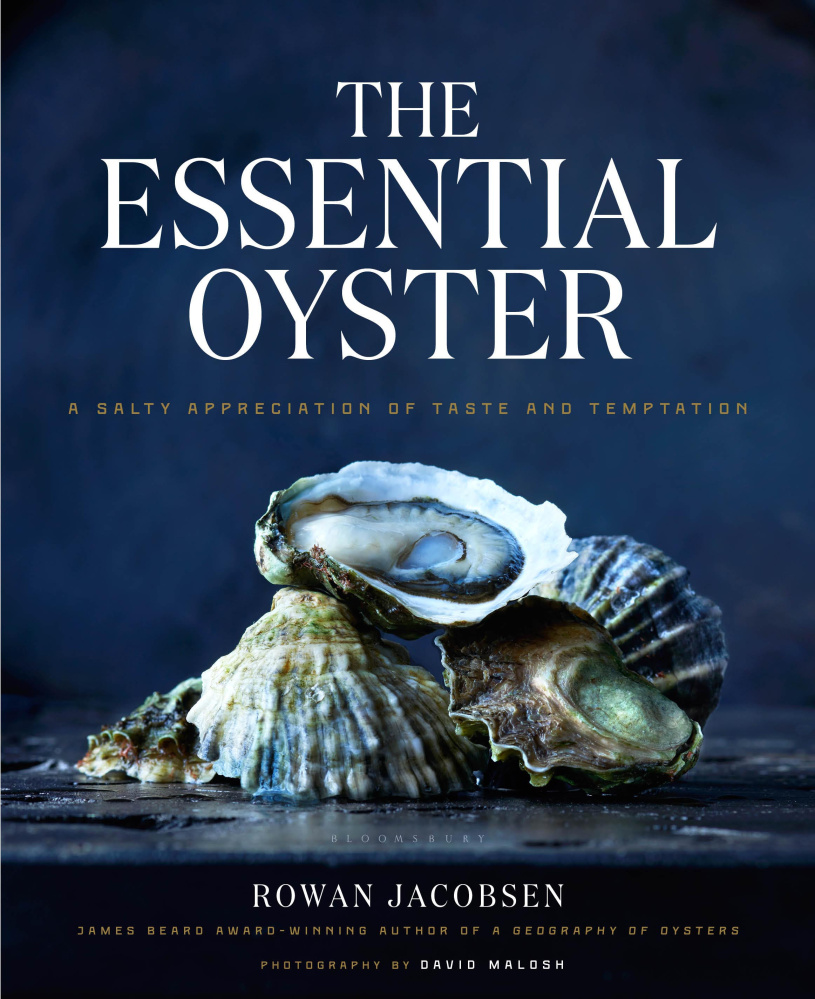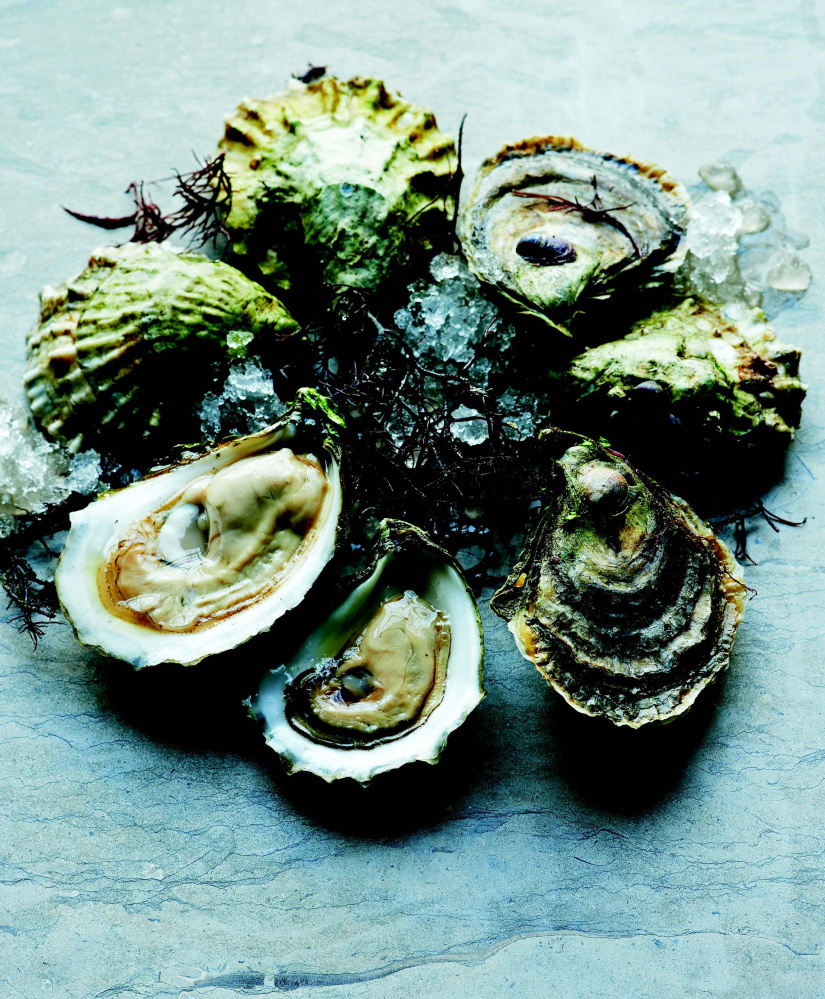“The Essential Oyster” is a big, handsome book, filled with close-up shots of oysters and smartly written profiles of oyster regions, oyster farmers and the oysters themselves. Writer Rowan Jacobsen describes his latest book as “a tool to make you a confident oyster connoisseur, so you can walk into a raw bar and order with confidence and swallow with confidence.”
The book completes his oyster trilogy, he said, begun in 2010 with “A Geography of Oysters” and extended with “The Living Shore.” Jacobsen will be in Portland tomorrow slurping oysters and signing books.
“Maine’s oysters are just the best. Absolutely the best. Anywhere in the world. Period,” he said in a brief telephone interview from his home in Vermont.
He devotes 18 pages to Maine’s rapidly growing oyster fishery – from four farms in the 1980s to 65 as of 2015 – with individual sketches of the Bar Harbor Select, Belon, Glidden Point, Nonesuch, North Haven, Pemaquid and Winter Point, each accompanied by an attractive, useful photo by David Malosh.
Here, in small part, is how Jacobsen tackles Maine’s Pemaquid:
“Absolutely ripped. Big, thick brown shells, deep cups, and burly muscles. These are the manliest oysters in America, and they somehow make even other large oysters look like underachievers. Think LeBron James. Pemaquids never have an off night.”
Forgive us a brief digression: The hardest thing about food writing is describing what food tastes like without continually resorting to the same tired adjectives – crispy, crunchy, mouthwatering… Jacobsen’s skill at differentiating among the roughly 100 oysters he covers in “The Essential Oyster” impressed us no end. Writing tips, please, we asked him.
“You can’t keep saying briny, briny, and this one is briny too,” he answered. “And it’s impossible to describe flavor. So I try to be really conscious of the experience when I’m eating an oyster or, really, eating and drinking anything. And then, rather than trying to just describe what the flavor is, I try to think of something out there in the world that’s not a perfect stand-in for that experience, but it can send the reader’s mind to a place. Draw a line from the thing that I’ve said, and somewhere along that line is that experience. You have to go at (food description) much less directly. Throw a light that throws shadows in the right place.”
After pausing to tape a large printout of that up on our screen, we asked Jacobsen about a gloomier topic. The Gulf of Maine is said to be the fastest-warming water in the world, a consequence of climate change. What does that mean for the state’s developing oyster industry?
“It’s definitely cause for much concern. A total species shift is underway,” Jacobsen said. “In terms of growing oysters, I don’t think that’s as big a problem, because south of you is some of the biggest oyster-growing grounds around – Rhode Island, the Long Island Sound. But, yes, the end is near.”
We’ve excerpted the introduction of Jacobsen’s “The Essential Oyster”:
A GOOD OYSTER smells like the sea breeze skipping over the shore. A bad oyster smells like a murder victim. I prefer the former. But I like how even the latter helps exemplify the essence of the interface: An oyster conveys its life experience directly to your senses.
Was it raised in the briny Atlantic or a brackish bayou? Warm water or cold? Rich or thin? Did it develop down in the pluff mud of the Carolina Lowcountry, or in a floating bag tossed by wind and waves in Willapa Bay? Did its ancestors hail from Japan or the James River? The whole story is there in front of you.You can read some of that story with your eyes, but to really understand, of course, you have to eat it. And when you do, even if you aren’t yet familiar with the language of oysters, you can usually get the essence right away. Every oyster is a tide pool in miniature, a poem built of salt water and phytoplankton that nods to whatever motes of meaning shaped it. It is the sea made solid. The bay gone sentient.
Not that solid. And not that sentient. An oyster is basically seawater with a purpose. It threatens to collapse back into sea-ness at any moment, the way an emulsion looks for an excuse to give up. This in-betweenness, neither solid nor liquid, can be the oyster’s unique allure or its primary offense, depending on the audience. Assuming that you are in the first camp – and if not, gentle reader, you have made a terrible mistake – then you already know that an oyster’s charm lies in straddling realms, in being animal, vegetable, and mineral all at once.
It’s also wicked salty and goes great with beer. Sometimes I think it’s that simple.”
Send questions/comments to the editors.




